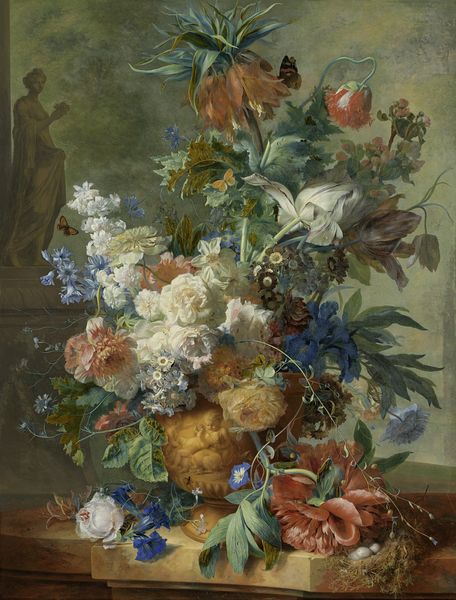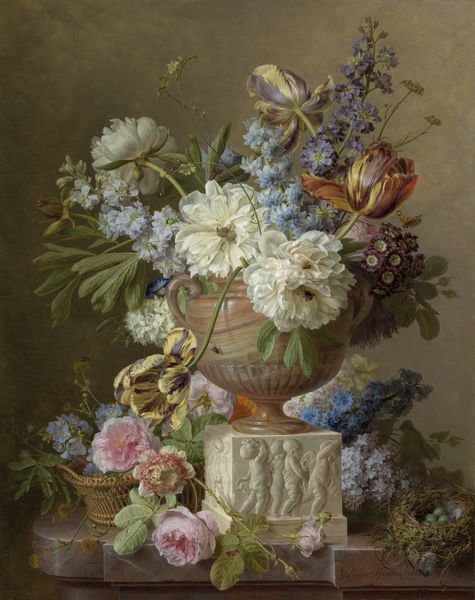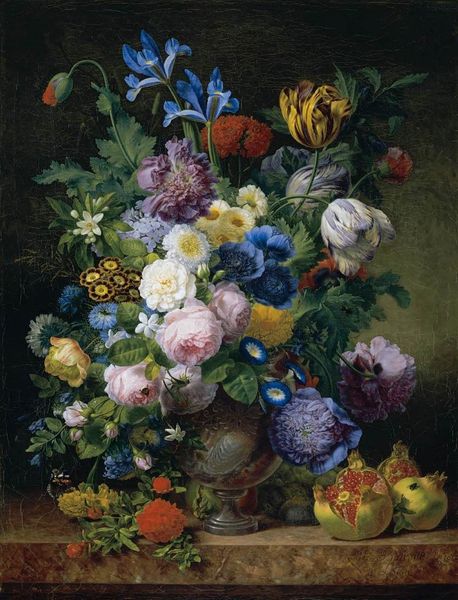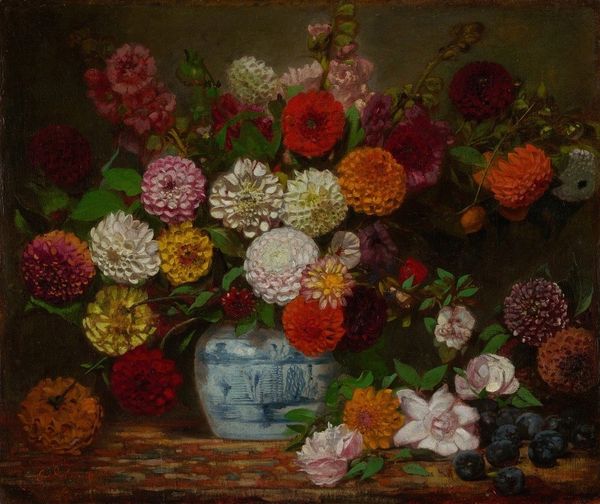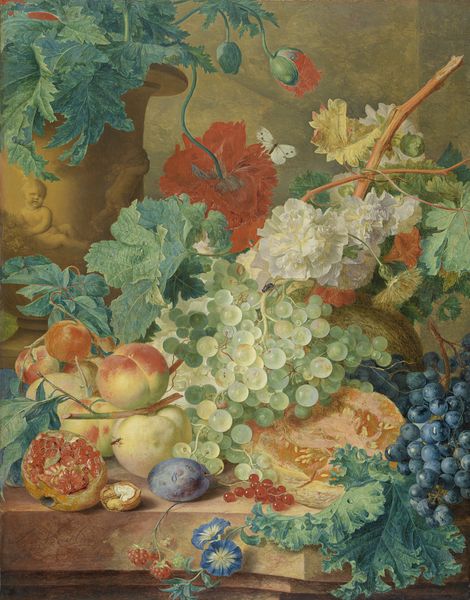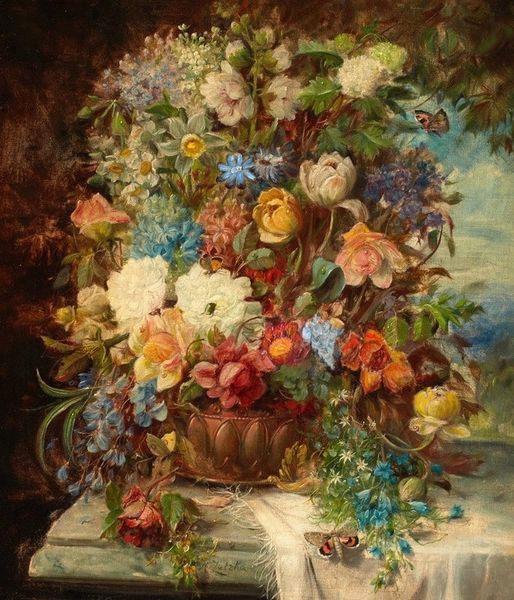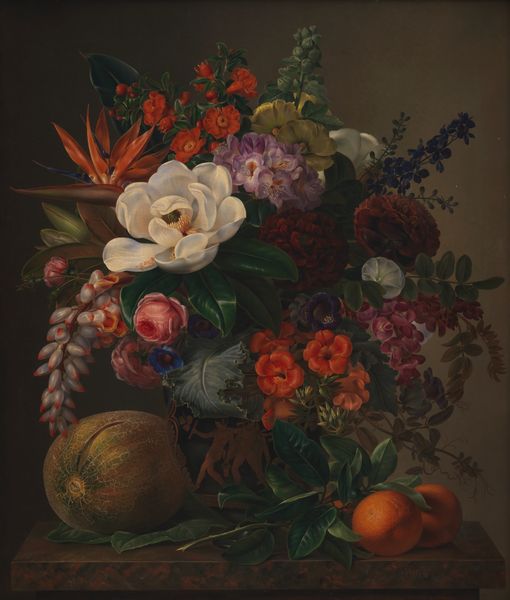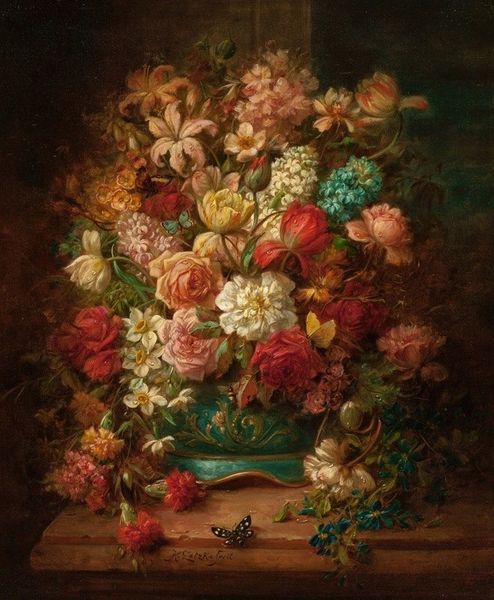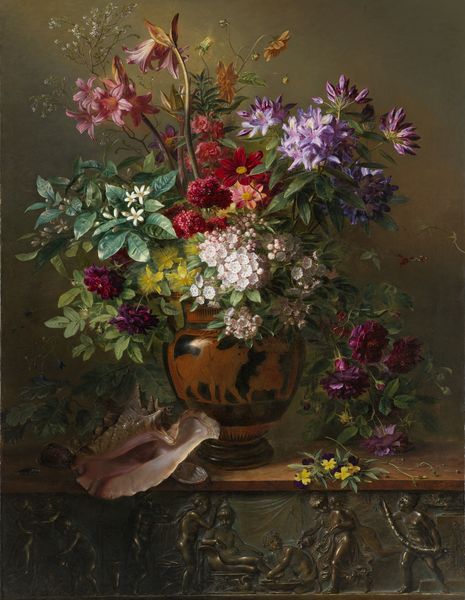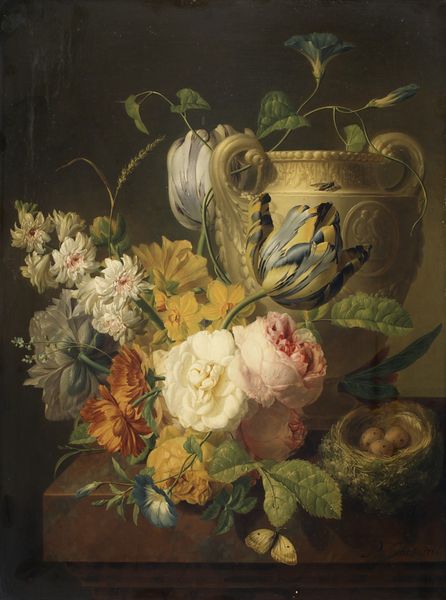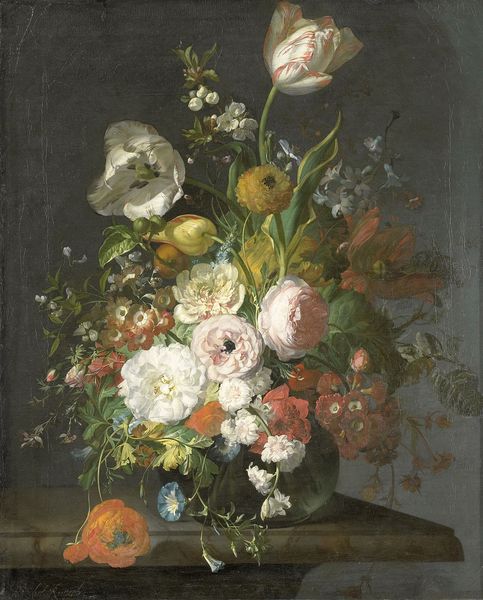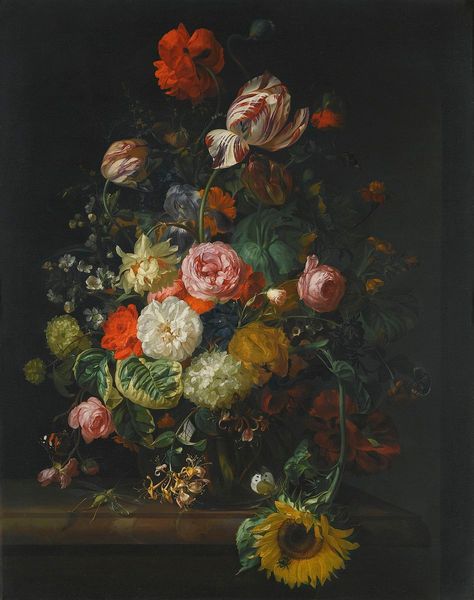
painting, oil-paint
#
baroque
#
painting
#
oil-paint
#
oil painting
#
genre-painting
#
watercolor
#
rococo
Dimensions: 77 cm (height) x 62 cm (width) (Netto), 97.5 cm (height) x 81.3 cm (width) x 5.3 cm (depth) (Brutto)
Curator: Good day, everyone. We're here today to look at a beautiful still life from the SMK collection— "Flowers" by Dominicus Gottfried Waerdigh, created sometime between 1715 and 1789. Editor: It strikes me as overwhelmingly… lush. An almost decadent cornucopia. The profusion of fruits and blossoms feels carefully arranged, yet simultaneously teetering on the edge of chaos. Curator: That tension is palpable, isn't it? These displays were more than just decorative. In the Baroque and Rococo periods, flowers and fruit often served as symbolic stand-ins for virtues, vices, and even fleeting mortality—think of the vanitas tradition, reminding us of life's transience. Each type of bloom may carry meaning... the roses as symbols of love, perhaps? Editor: The sheer textural variance fascinates me. Look at how the smooth skins of the peaches contrast with the porous melon, and how those berries hang with a totally different cadence than the rigid flower stems, bound as they are. All unified in this almost ambered light… like captured time. Curator: Waerdigh is known for his handling of light. This “ambered light,” as you call it, softens edges and almost unifies the diverse elements of the scene, despite all their differences. This creates a serene rather than chaotic impression. Do you notice the little butterfly? These kinds of creatures, painted among the stems, were more often included in rococo art and served as symbols of a transformed soul rising to meet its creator. Editor: Indeed. The symbolism and execution intertwine to create an object of aesthetic, historical and potentially moral fascination. Though perhaps in the 21st century our engagement can simply lie with appreciating the virtuosity inherent in still life painting—a celebration of line, tone and the possibilities of oil-paint. Curator: It’s that multilayered approach that makes Waerdigh’s work enduring. This seemingly simple still life reflects deeper social and symbolic currents, reminding us of the elaborate worldview that informed its creation. Editor: A worldview made tangible through the artist's considered rendering of the physical world, isn't it? Food for thought indeed.
Comments
No comments
Be the first to comment and join the conversation on the ultimate creative platform.
